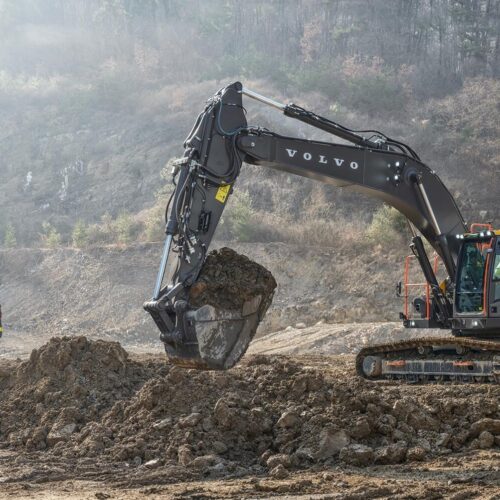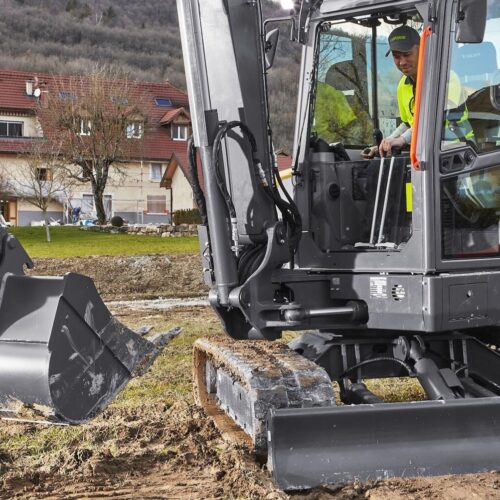3 Tips to Keep Asphalt Compactors up to Speed with Pavers
Many paving projects use a common practice that contractors should avoid — rolling too fast with the breakdown compactor, especially when using a vibratory compactor.
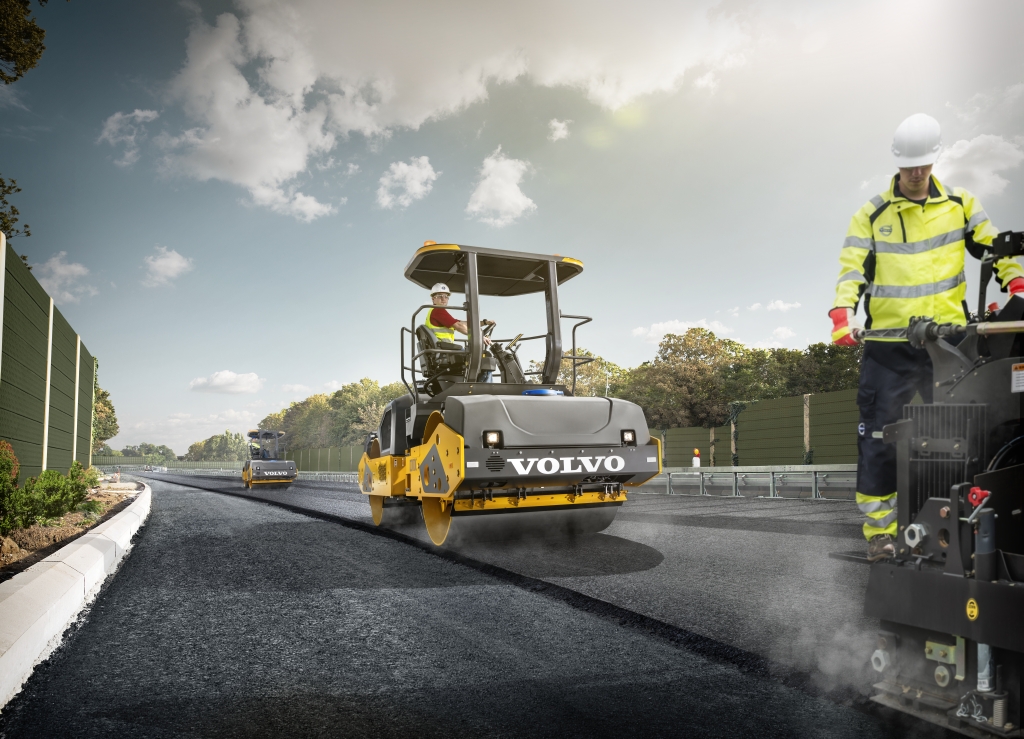
Many operators attribute excessive speed to the perceived need to keep up with the paver. But when this happens, contractors typically find out that one or more pavement density/smoothness tests fail to meet minimum road construction requirements. Oftentimes, the breakdown compactor operator is blamed.
It’s true that breakdown compaction must be accomplished while the mix has low enough viscosity to permit aggregate particle rearrangement that eliminates most of the voids in the pavement structure. Certainly, the compactor train needs to keep up with the average forward speed of the paver. There are also instances where the paver moves too fast for the asphalt roller to keep up.
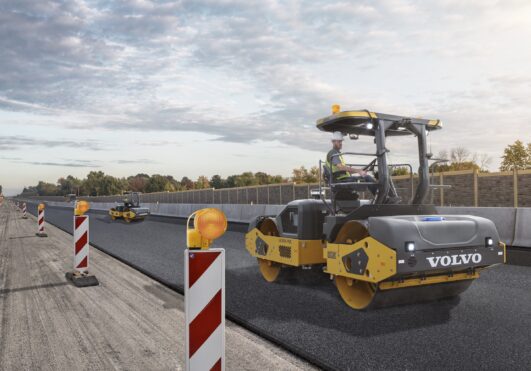
1. Know Whether One or Two Breakdown Compactors Are Needed
Depending on the delivery of mix and paving width and depth, a contemporary paver with a vibratory screed and automatic controls for grade and slope will typically achieve laydown rates of around 45 feet (13.7 meters) to 60 feet (18.3 meters) per minute.
Any higher than 60 feet per minute, and it’s nearly impossible for a single breakdown compactor to keep up with the paver. Even compactors with the highest vibration frequency levels struggle to compact at a sufficient speed to keep up with a paver moving at this speed.
As an example, Volvo DD128C asphalt compactors can be used as breakdown compactors for projects like ultra-thin lifts (let’s say .75 inches). In this instance, amplitude Setting 1 is ideal with a vibration frequency of 4,800 vpm. That’s fast enough for the compactor to travel 5.5 miles an hour and still maintain a best practice of 10 impacts per foot for smoothness. This is what we recommend for 55-inch diameter drums.
Again, to convert miles per hour into feet per minute, multiply by 88. This compactor will move at 484 feet (147.5 meters) per minute at this setting, making it well suited to compact thin lifts while maintaining an optimal speed behind the paver. If you divide the 484 feet per minute by 5 (the number of passes), you get 96.8 feet (29.5 meters) per minute. You then need to take starts, stops and lane changes into account. To do this, we typically factor in 60% efficiency. Multiplying our final number by .6 then gives us 58.08 feet per minute as the roller’s average speed.
On a thicker 1.5-inch lift, amplitude Setting 3 (0.0133?) is ideal, which is comparable to most dual amplitude vibratory compactors in “low amplitude.” At 10 impacts per foot, this would permit a speed of 4.43 mph, or around 390 feet per minute. Dividing by 5 (the number of passes), you get 77.96 feet (23.76 meters) per minute. At 60% efficiency, the compactor can travel approximately 46.78 feet per minute.
The DD128C on Setting 1 for ultra-thin lifts can keep up with a paver traveling up to 57 feet per minute, which applies to most paving jobs. In Setting 3, it would also likely keep up for a 1.5-inch lift. Clearly, neither setting will keep up with a paver over 60 feet per minute. In these instances, you need two breakdown compactors to get the job done.
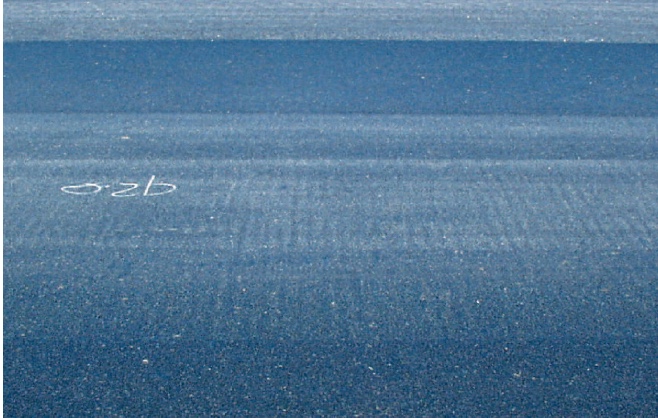
2. Capitalize on the Benefits of Two Breakdown Compactors
Managing a paving project is a balancing act. It’s critical to equalize material production and delivery with laydown and compaction. Whenever one or more of these activities becomes unbalanced, problems occur.
If sufficient mix can be produced and delivered to the paver to permit it to operate continuously at a speed at or above 60 feet (18.2 meters) per minute, what’s a paving crew supposed to do to earn the available incentives for density and smoothness? The solution is to have tandem breakdown compactors or two breakdown compactors working in echelon. These two compactors should have similar size, weight and vibration characteristics so that performance is equal and uniform across the width and length of the pavement.
Adding a second breakdown compactor usually allows the entire paving train to move faster for higher production. This gain in productivity can more than offset the added cost of owning and operating the second breakdown compactor. Having added breakdown compaction capacity also reduces the need for intermediate compaction and expedites the finish rolling process.
An added benefit of two breakdown compactors working together behind a paver is consistency and uniformity of density and smoothness readings. Since the pair of compactors don’t need to operate at excessive rolling speeds to keep up with the paver, the smoothness of the pavement behind the compactors is superior.
When a surface appears wash boarded like it does in this image, the contractor won’t earn the incentive for smoothness. The public will also react negatively to driving on it. This can be avoided by paying attention to vibratory compactor rolling speeds.
Larger diameter drums can produce acceptable results with wider impact spacing — smaller diameter drums need closer impact spacing to achieve smoothness.
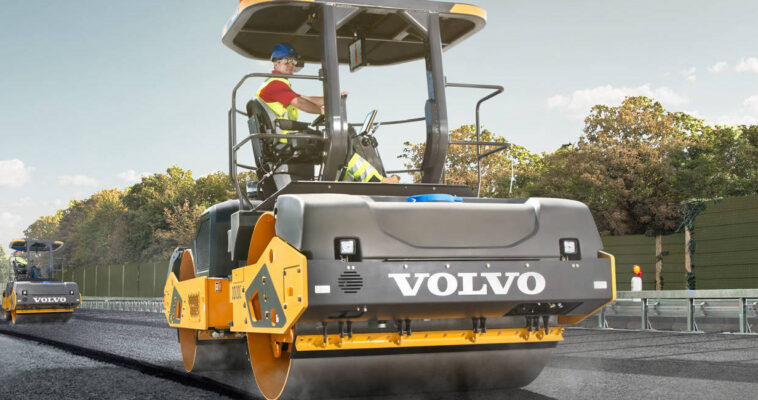
Use Correct Asphalt Compactor Drum Sizes for Proper Impact Spacing
The largest compactors, with drums larger than those listed above, may produce acceptable surface smoothness results with drum impact spacing as low as 8 impacts per foot (26 impacts per meter). It’s always recommended to set up a test strip to prove the rolling pattern and rolling speed to assure performance. Appropriate density and smoothness tests will confirm the asphalt rolling pattern and speed selected will provide the desired results on the test strip.
